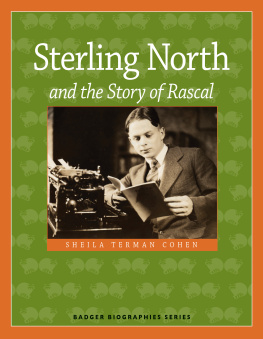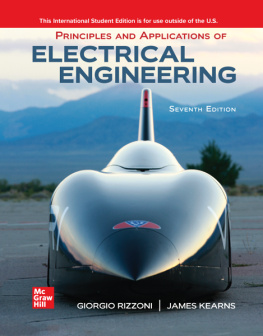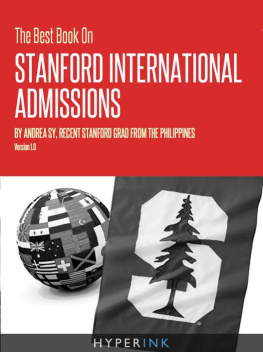
Fred Terman at Stanford : building a discipline, a university, and Silicon Valley
Gillmor, C. Stewart, 1938
This book was produced in EPUB format by the Internet Archive.
The book pages were scanned and converted to EPUB format automatically. This process relies on optical character recognition, and is somewhat susceptible to errors. The book may not offer the correct reading sequence, and there may be weird characters, non-words, and incorrect guesses at structure. Some page numbers and headers or footers may remain from the scanned page. The process which identifies images might have found stray marks on the page which are not actually images from the book. The hidden page numbering which may be available to your ereader corresponds to the numbered pages in the print edition, but is not an exact match; page numbers will increment at the same rate as the corresponding print edition, but we may have started numbering before the print book's visible page numbers. The Internet Archive is working to improve the scanning process and resulting books, but in the meantime, we hope that this book will be useful to you.
The Internet Archive was founded in 1996 to build an Internet library and to promote universal access to all knowledge. The Archive's purposes include offering permanent access for researchers, historians, scholars, people with disabilities, and the general public to historical collections that exist in digital format. The Internet Archive includes texts, audio, moving images, and software as well as archived web pages, and provides specialized services for information access for the blind and other persons with disabilities.
Created with abbyy2epub (v.1.7.2)
Digitized by the Internet Archive in 2019 with funding from Kahle/Austin Foundation
https://archive.org/details/fredtermanatstanOOOOgill
FRED TERMAN AT STANFORD
Fred Terman at Stanford
Building a Discipline,
a University,
and Silicon Valley
C. STEWART GILLMOR
1W > *"
Stanford University Press Stanford, California 2004
Stanford University Press Stanford, California
2004 by the Board of Trustees of the Leland Stanford Junior University. All rights reserved.
Printed in the United States of America on acid-free, archival-quality paper
Assistance for publication of this book was provided by The School of Engineering,
Stanford University.
Library of Congress Cataloging-in-Publication Data Gillmor, C. Stewart
Fred Terman at Stanford : building a discipline, a university, and Silicon Valley / C. Stewart Gillmor. p. cm.
ISBN 0-8047-4914-0 (alk. paper)
1. Terman, Frederick Emmons, 1900-1982. 2. Radio engineersCaliforniaStanford Biography. 3. Stanford University. Dept, of Electrical Engineering. I. Title.
TK6545.T47 G55 2004 621.3 84092dc2 2
2003025166
Original Printing 2004
Last figure below indicates year of this printing: 13 12 11 10 09 08 07 06 05 ,04
Typeset by Alan Noyes in io/i4Janson
Contents
Foreword, Richard Atkinson yH
Preface X1
Introduction: Building a Discipline, a University, and Silicon Valley i
1. California Boy, 1900-1924 11
2. The Stanford Professor, 1925-1937 70
3. Building Radio and Electronics, 1937-1941 131
4. The Radio War, 1941-1946 186
5. Jump-starting Engineering at Stanford, 1942-1949 253
6. From Building a Discipline to Building a University, 1949-1959 300
7. Raising Steeples at Stanford, 1958-1965 348
8. If I Had My Life to Live Over Again, I Would Play the
Same Record, 1965-1982 436
Epilogue: Building, Momentum, Waves, and Networks 498
APPENDICES
a. Fred Termans Salary, 1925-1965 507
b. U.S. Patents of Fred Terman, 1930-1947 508
c. Amateur (Ham) Radio Operators at the Radio Research
Laboratory 510
d. Stanford in the Rankings 513
Notes 5*9
Bibliography 595
Foreword
Richard Atkinson
Father of Silicon Valley: these words seem to leap from the page. Invariably this is the only description now applied to Fred Terman in newspaper and magazine articles. It is not an inaccurate title, but it hardly begins to do justice to the genius that was Frederick Emmons Terman. It is difficult to know where to begin when describing him. He was without a doubt a brilliant electrical engineer, a learned scholar who authored groundbreaking textbooks on radio engineering and electronics, an inspiring teacher who kindled the spirit of discovery in his students, and an academic administrator whose devotion to excellence and visionary leadership firmly set a university on the path toward greatness. It was the latter, coupled with the extraordinary depth of his vision that I find the most compelling and enduring of Freds many accomplishments. When all is said and done, one cannot separate Fred Terman from Stanford University, for their stories are inextricably intertwined.
Fred Terman set a standard of excellence for the Stanford campus that has endured to this day. He was a driving force in the development of university policy, and his vision for Stanford and the surrounding community is stdl the envy of universities throughout the world. He ranks among the finest academic administrators in the history of American higher education. His theories on the development of a modern research university and his implementation of those theories have stood the test of time. I would strongly encourage any twenty-first-century administrator interested in developing a campus and its curriculum to study closely Fred Termans work at Stanford.
It seems strange that a man who would alter the course of a university would spend the better part of his life in one place, only occasionally venturing away from that university and from academic life. Fred Terman grew up at Stanford
and his entire career, except for the war years, was essentially spent at the university. His devotion to Stanford was total, and his love for that institution led him to work ceaselessly on its behalf. He and Stanfords legendary president, Wallace Sterling, took what was considered a respected university and transformed it into one of the truly great universities in the world.
That transformation seems to have had its beginning during Fred Termans tenure in the Department of Electrical Engineering. As the department grew in stature, so did Fred as an academic administrator. He recruited the most talented students in the field. He encouraged those students to stay in the area, as he himself had done, and to use their knowledge to create what we now refer to as startup companies. From there it was a natural progression for him to develop close ties with local industries begun by his students. I have always felt that the crossfertilization between academic and industrial research, encouraged by Terman more than a half century ago, is one reason why university scientific discoveries are so rapidly translated into new industries, companies, products, and services. It is also one of the reasons the United States generates new companies, new jobs, new products and services at a much faster pace than the rest of the world.
Next page

















